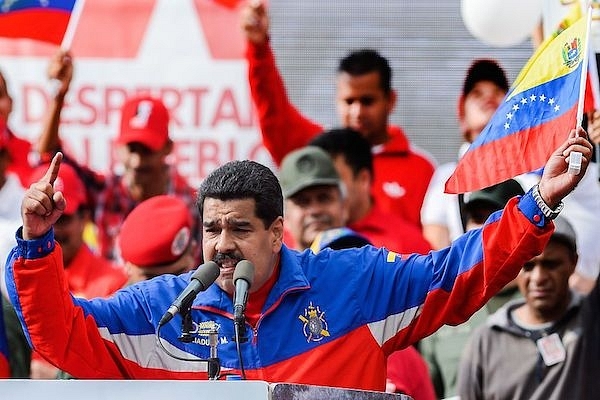World
Chavez, And Now Maduro: The Descent Of Venezuela Into Misery
- How Venezuela got to where it is, and why it continues on its slide downwards

Photo: FEDERICO PARRA/AFP/Getty Images
This piece was first published at The Economics Detective. The points below were made during a special podcast with Francisco Toro of The Caracas Chronicle.
You can listen to the episode at the website of The Economics Detective and consider supporting their initiative.
Venezuela has all the markings of a paradise. It has a lush, tropical climate and access to vast oil reserves. And yet, the Venezuelan government has run the country into the ground. As of now, all but the wealthiest Venezuelans struggle to eat. What went wrong?
It might surprise you, given Venezuela’s current state, that the country was for many years a model Latin American country. Before 1989, Venezuela had a stable, two-party democracy. Its economy functioned when the price of oil was high, and it was free of much of the violence that plagued other Latin American nations. That changed in 1989 with an event known as El Caracazo.
El Caracazo refers to a series of riots that occurred in February and March of 1989, and their brutal repression by the Venezuelan army. The details surrounding El Caracazo remain deeply controversial among Venezuelans.
Before 1989, the Venezuelan economy was characterised by cronyism. Many industries were protected from competition both by tariffs on foreign goods and restrictions on entry by new firms. This arrangement could continue so long as oil prices stayed high, but with the fall of oil prices in the 1980s, the economy sunk into a malaise. The government was deeply indebted, and the incoming government tried to implement neoliberal reforms to save both the economy and the government’s balance sheet.
Within weeks of the reforms, the riots that would become El Caracazo began. Here’s where the controversy lies: Chavez and his supporters on the far left point to these riots as the people rising up against capitalism. But Venezuelans on the right point out that the reforms hadn’t had time to take effect when the riots occurred and, therefore, they were more likely a reaction against the ongoing economic malaise than the reforms.
In any case, Caracazo marked a turning point for Venezuela that would lead to the rise of socialist president Hugo Chavez, who would control the country until his death in 2013. Chavez’ brand of Marxism was a throwback to the socialist regimes of the Cold War. His Venezuela was a mixed economy with very heavy restrictions on its capitalist elements. For instance, Chavez made it illegal to fire an employee for any reason. He imposed price controls throughout the economy. When oil prices were high, they propped up the rest of the economy. When they were low, the regime could borrow to paper over critical shortages. During this time, Chavez received praise from Western intellectuals on the left. Even as late as 2013, Salon was praising Chavez’ “economic miracle.”
In 2013, Chavez died and was succeeded by Nicolas Maduro. In 2014, the price of oil collapsed, causing Venezuela to default on its debts. The government has attempted to print its way to solvency, causing high inflation. The Chavez and Maduro regimes have kneecapped the capitalist system and replaced it with nothing. Toro argues that even Soviet-style central planning would be an improvement at this point.
There are clear pragmatic reforms Maduro could make to reduce the impact of the crisis. Yet he doesn’t, and members of his government who speak out in favour of market-led reforms of any kind are summarily fired. Maduro listens to the advice of a Marxist economist named Alfredo Serrano, who is a mix between a hard-core Stalinist and a utopian campus liberal.
Despite the continually worsening economy, Maduro holds on to power. He also maintains the support of about a third of the population. Maduro’s regime has managed to place the blame for the crisis on sabotage by a nefarious capitalist conspiracy.
Businesses that hold inventory for any length of time are at risk of having their warehouses raided and filmed as proof that the ongoing shortages are the work of capitalists hoarding goods. Maduro also scapegoats the many people who earn their livings re-selling price-controlled goods, a group that now encompasses one in six Venezuelans. As dubious as these claims are, the government controls the media and seems to have convinced a third of the population of this narrative.
Introducing ElectionsHQ + 50 Ground Reports Project
The 2024 elections might seem easy to guess, but there are some important questions that shouldn't be missed.
Do freebies still sway voters? Do people prioritise infrastructure when voting? How will Punjab vote?
The answers to these questions provide great insights into where we, as a country, are headed in the years to come.
Swarajya is starting a project with an aim to do 50 solid ground stories and a smart commentary service on WhatsApp, a one-of-a-kind. We'd love your support during this election season.
Click below to contribute.
Latest